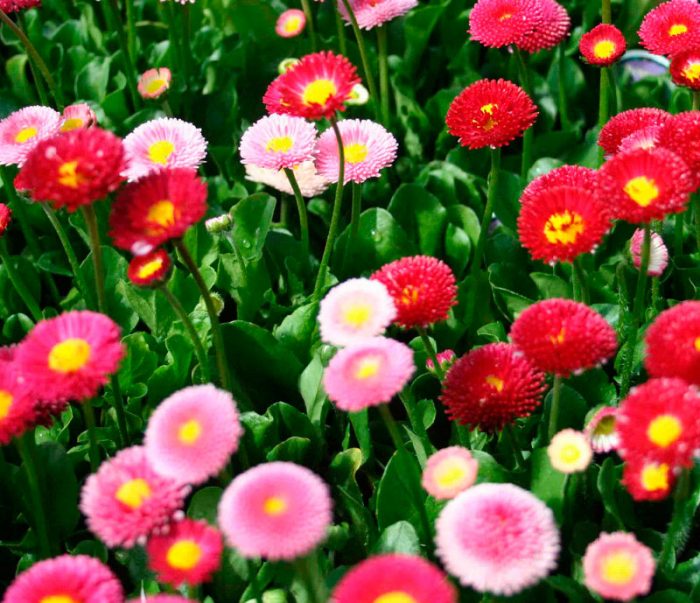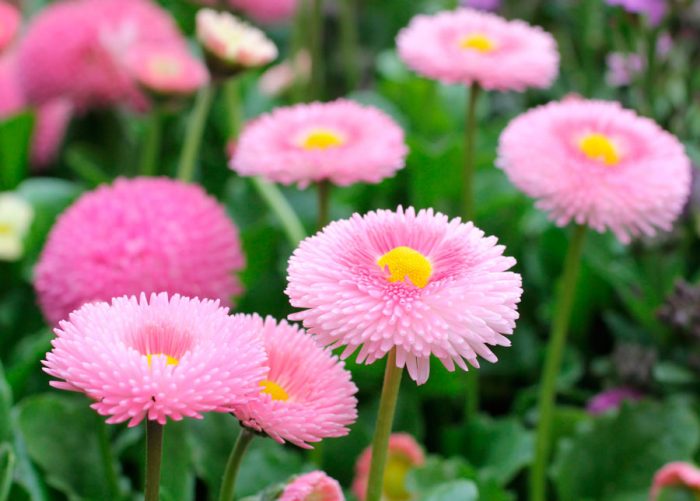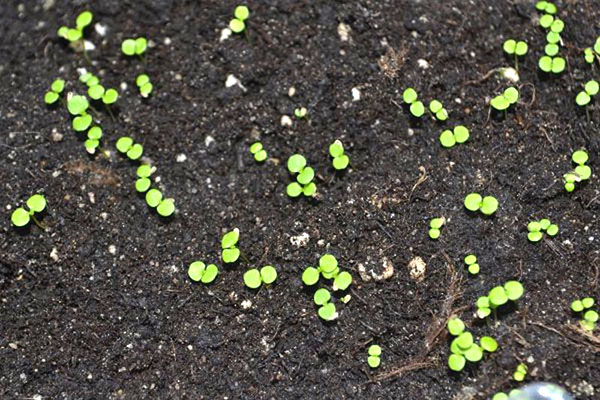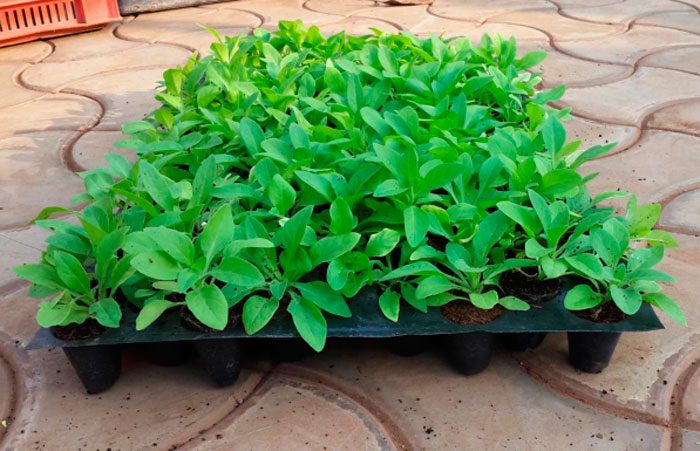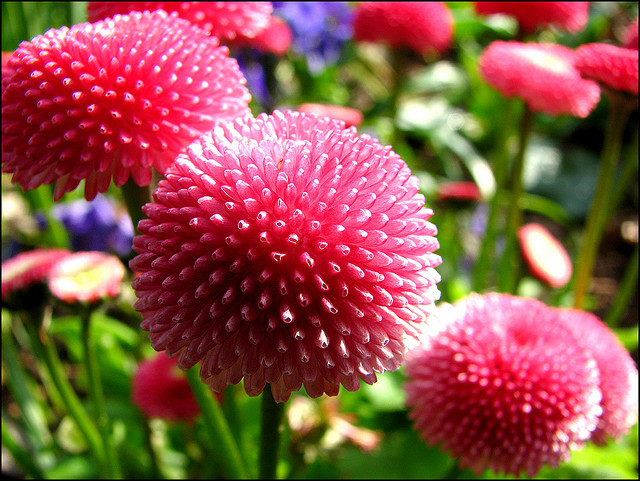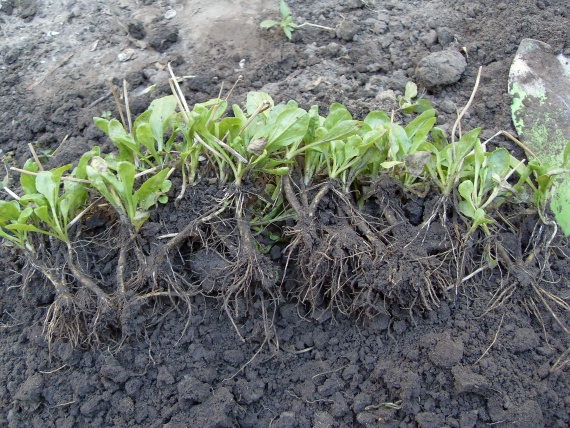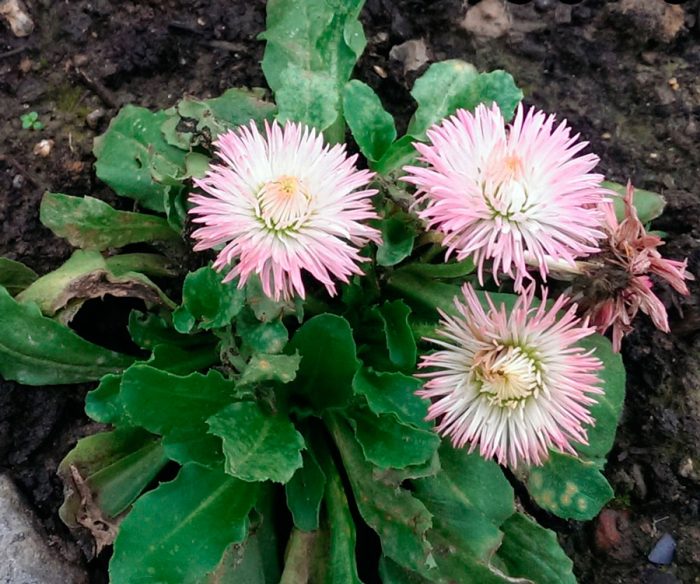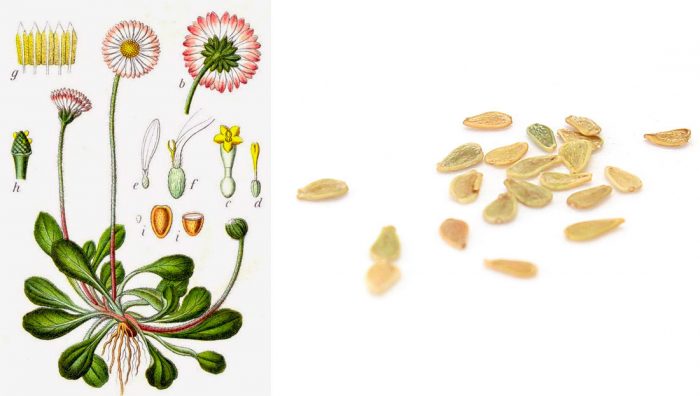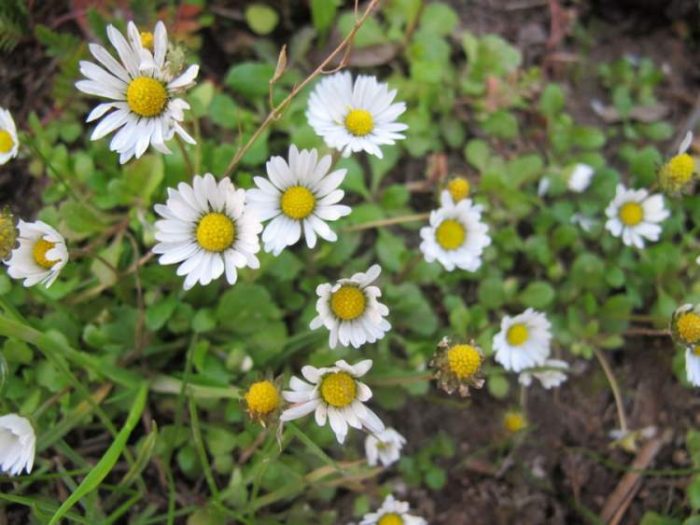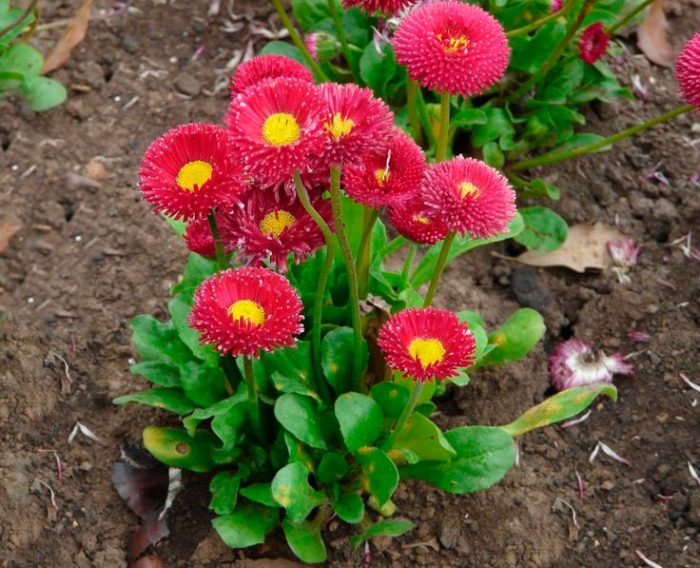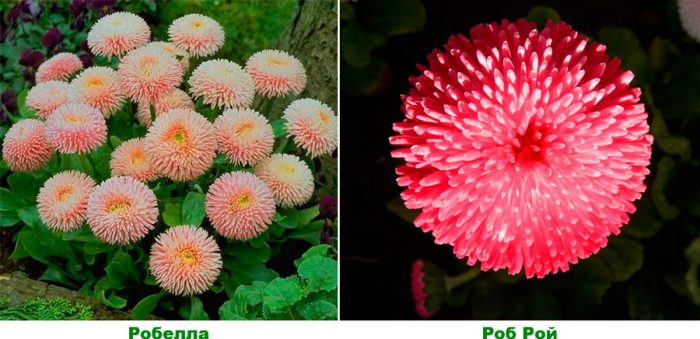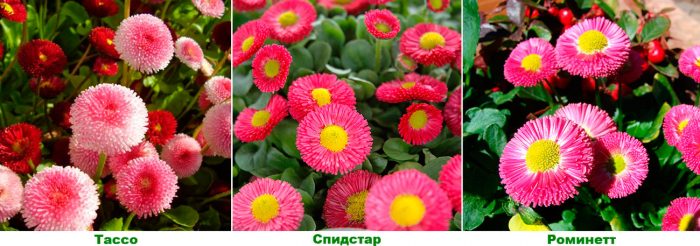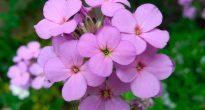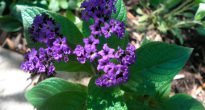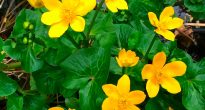The perennial plant daisy (Bellis) is a member of the Asteraceae family. This genus unites 14 species. In the wild, this flowering plant is found in the Mediterranean. The ancient Greek word "margarites" in translation means "pearl", this is due to the fact that the wild daisy has small white flowers. Pliny gave the plant its Latin name; it translates as "beautiful, beautiful." In some countries, the daisy is called the "eye of the day" because the opening of its flowers is observed directly at sunrise. If this name is translated into English, then it will sound like "day ah", in this regard, the British affectionately call this plant by the diminutive name of Daisy. German girls used daisies instead of daisies for fortune-telling, tearing off their petals, in this regard, the daisy-daisy began to be called in Germany "the measure of love". Such a flower culture has been very popular among gardeners for many years, so a large number of legends and legends have been invented about daisies. These flowers were considered very fashionable almost all the time, as they look spectacular and cute during flowering.
Content
Daisy features
The daisy is a small herb with a short rhizome. Basal leaf plates are obtuse, spatulate, crenate. The stem is leafless and only 1 head is formed on it. The development of reed female flowers, which have a pink or white color, occurs on a conical receptacle. The middle flowers are tubular, bisexual, and they are colored yellow. In those daisies that are grown by gardeners, the inflorescences can differ not only in size, but also be double, semi-double or simple. The fruit is a flattened achene that does not have a tuft.
Growing daisies from seeds
Sowing
Daisies, which are species, reproduce very well by seed. Sowing is carried out in open soil in June. Seeds are sown in moistened soil, while they do not need to be sealed, only they are covered with a thin layer of sifted humus or sand on top.The fact is that such seeds need warmth (about 20 degrees) and sunlight to sprout. If done correctly, the first seedlings may appear just 7 days after sowing. If the seeds are not embedded in the soil, and the crops are covered from above with a transparent film, then the embryos will be activated, and the sowing depth will no longer matter (the seedlings will appear in any case). After a couple of days, the shelter is removed, and the emerging plants must be sprinkled with a thin layer of soil. These seedlings are distinguished by a relatively rapid development, in this regard, they will soon need to be cut into open soil, while using the 0.2x0.2 m scheme.Flowering of daisies grown from seeds can be seen only next spring, and in this season, all their efforts will be directed to the formation of a leaf outlet. These flowers reproduce well enough by self-seeding. In spring, when the seedlings appear, you only need to thin them out, and also pull out all the diseased or weak plants. However, with this method of reproduction, it should be borne in mind that from year to year the flowers will become smaller and smaller, and the plants will gradually lose their varietal characteristics.
Growing through seedlings
A large number of gardener daisies are grown precisely through seedlings. The fact is that such seedlings can begin to bloom already in the current season. Seeds are sown in February or March, for this, separate containers are used, which will exclude injury to the root system of the plants during the pick. The containers need to be filled with nutrient-rich, structured soil, which can be purchased at any specialty store. Sowing seeds is carried out in the same way as in open soil, while such crops will also need good lighting and heat (about 20 degrees). After the seedlings appear, it is necessary to rearrange the containers to a cooler place (from 12 to 15 degrees). It should also be noted that the seedlings will need additional lighting, since the required daylight hours for it should be from 12 to 14 hours, and at this time of the year the day is not yet long enough.
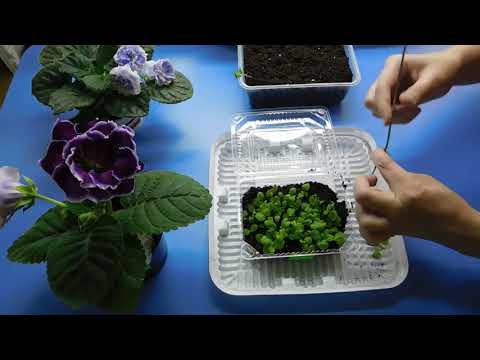

Watch this video on YouTube
Planting daisies in open ground
What time to plant
Daisies are light-loving plants; therefore, a well-lit area must be chosen for them. This culture is not demanding on the composition of the soil. You can plant seedlings in absolutely any garden soil. However, it will grow best on structured light loam. For planting, places located in lowlands are not suitable, where there is stagnation of melt or rainwater, the fact is that such plants react extremely negatively to excessive soil moisture.
The grown seedlings are planted in open soil in the last days of May or the first in June.
Landing features
It is necessary to plant a plant in the soil together with a clod of earth. To begin with, you should prepare holes for planting not very large, the distance between them should be equal to 20 centimeters. Seedlings should be planted in them using the transshipment method, while trying not to damage the roots of the plants. The soil surface around the bushes must be well compacted, after which the planted daisies are watered abundantly.
Caring for daisies in the garden
Growing daisies is not that difficult. They only need to be watered, weeded, fed and loosened in a timely manner. The root system of these plants is shallow, so they should be watered systematically. If the daisies do not have enough water, then the inflorescences will become smaller, while the terry varieties will lose this quality.When the flowers are watered, it is necessary to gently loosen the soil surface around the bushes, which will improve the aeration of the root system. To significantly reduce the number of watering, weeding and loosening, after the seedlings are planted, the surface of the site should be covered with a layer of mulch. Also, the presence of a mulch layer will help to avoid bulging of the root system, which occurs due to the drying out of the topsoil.
It is recommended to feed daisies at least twice during the season. For this, complex fertilizers for flowering plants with microelements are used (from 25 to 30 grams are taken per 1 square meter). For flowering to be longer and more effective, you need to promptly cut off the inflorescences that have begun to fade.
Reproduction of daisies
Daisies are grown not only in a generative (seed) way, vegetative methods are also suitable for this, namely: cuttings and dividing the bush. Experts recommend propagating by vegetative methods, first of all, varietal daisies, because with age, their inflorescences become smaller, and their effectiveness is also lost.
Experienced gardeners recommend dividing the bushes in the last summer weeks or the first ones in the autumn, and this procedure can also be carried out in the spring. Remove the bush from the soil and divide into 4–6 pieces. Pinch all available flowers and buds at the delenki, you also need to remove all leaf plates, leaving the petioles, and the roots are shortened to 50–80 mm. As a result of such preparation, the delenki will be able to take root much better after disembarkation. The cuttings planted in open soil quickly adapt to new conditions and continue to grow and bloom actively. If the delenka does not have roots, then it will still take root. After planting in the soil, new roots will begin to grow from the base of the leaf cuttings.
Propagation of daisies by cuttings is carried out at the same time as dividing the bush. To do this, using a very sharp tool, you should cut off the lateral shoots with foliage from an adult bush. Place them on a bed, on which the soil should be loose. After half a month, such cuttings will completely take root. The first flowering of daisies grown from cuttings can only be seen next season.
Pests and diseases
Despite the fact that this flower culture is small in size, it is quite resistant to both diseases and various harmful insects. But it should be remembered that it is susceptible to infection with viral diseases. So, in the affected bush in the first summer weeks, it can be noted that the pedicels are stretched, the inflorescences become smaller, while the leaf plates become smaller and do not have such a rich color. All infected bushes must be dug up and destroyed as soon as possible, and the area where they were grown should be disinfected, for this use a strong solution of potassium manganese.
Very rarely, a daisy is affected by powdery mildew. In a diseased bush, a loose bloom of light gray or whitish color appears on the surface of flowers and foliage. Plants or their parts affected by this fungal disease are recommended to be destroyed. In order to exterminate such a fungal disease, it is necessary to spray all the plants on the site with Topaz, a solution of colloidal sulfur or Bordeaux liquid.
In some cases, ticks settle on the bushes, to combat which they use insecticidal preparations, for example, Actellik or Karbofos. Mice are also capable of damaging plants; to destroy them, a poisoned bait is placed in several places on the surface of the site.
Experienced gardeners argue that if, when growing a daisy, you follow all the available agrotechnical rules of a given culture, then they will be so strong that they may not get sick at all, while delighting their owner with cute and beautiful flowers.
Perennial daisy after flowering
Seed collection
Daisy seeds ripen at different times, that is, they do not ripen at the same time. In this regard, their collection must be done gradually, or rather, 1 or 2 times in 7 days. Cut off the required number of wilted inflorescences, and try to do this before the ripe seeds are washed with rain or a stream of water during watering. The seeds should be removed from the inflorescence and spread over the surface of the paper sheet. For final drying, they are placed in a well-ventilated room. The dried seeds are poured into paper bags, which are folded in a dark and dry place, where they will be stored.
How to prepare for wintering
To protect the surface system of daisy roots from severe winter frosts, especially if not very large amounts of snow are expected to fall, the surface of the site must be covered with a thick layer of mulch (humus, sawdust, peat, etc.). The thickness of the mulch layer must be made such that it is not thinner than 80 mm. If the bushes begin to bulge out of the soil, during which their roots are exposed, the need for mulching the site increases. In spring, these bushes will need to be transplanted to a new place at a more suitable depth for them.
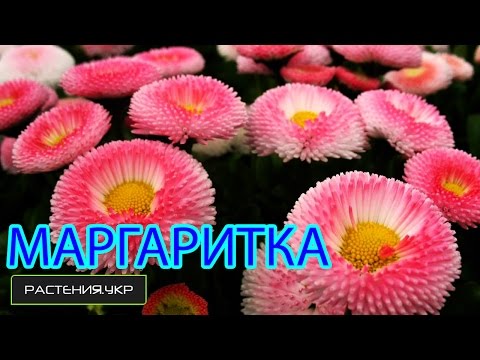

Watch this video on YouTube
Types and varieties of daisies with photos and names
Gardeners cultivate 2 types of daisies: annual and perennial. There are not very significant differences in planting and caring for perennial and annual daisies.
Annual daisies (Bellis annua)
Plants belonging to this type are recommended for growing at home, while they can be an excellent decoration for a balcony or terrace. They can also be grown in rockeries. Perennial daisies are more popular with gardeners, in this regard, breeders paid more attention to them, thanks to which many different varieties were born.
Perennial daisy (Bellis perennis)
The height of the bushes is 0.1–0.3 m. The basal rosette consists of spatulate or oblong-ovoid leaf plates. In the second year after the appearance of seedlings, the bushes form a large number of leafless peduncles, on the surface of which there is pubescence, while they reach a height of 0.15–0.3 m. The inflorescences of the basket reach 80 mm in diameter, they can be colored pink, white or red. On the periphery of the baskets, there are large reed or tubular flowers, while in the middle there are yellow-golden small tubular flowers. Seeds are flat, small, oval. This species reproduces well by self-sowing, friendly seedlings that appeared in the spring, if desired, can be used as seedlings.
All the numerous varieties of perennial daisies are divided according to the structure of the inflorescences-baskets into tubular and reed ones. In both groups there are varieties with double, semi-double and simple inflorescences:
- Simple inflorescences... They consist of 1-3 rows of reed or tubular colored flowers. In the middle there is a disc, consisting of tubular small yellow flowers.
- Semi-double inflorescences... They consist of colored reed flowers arranged in 4 rows. The middle is yellow and consists of small tubular flowers.
- Terry inflorescences... They include many colored reed flowers, while they almost completely cover the middle, consisting of tubular yellow flowers.
Also, varieties are divided according to the size of inflorescences-baskets: small - 20–40 mm in diameter; medium - 40-60 mm; large - from 60 mm and more.
The best varieties:
- Robella... In diameter, large double inflorescences reach 50 mm. The inflorescences are quite dense, consisting of tubular folded flowers of salmon pink color.This species was awarded a gold medal at the Fleroselect competition.
- Rob Roy... Small red inflorescences grow on miniature bushes, reaching 10–20 mm in diameter.
- Bella Daisy... This early-flowering variety was also awarded the Fleroselect award. In diameter, the double basket reaches 20-25 mm, it has a rich pink color.
- Pomponette... On the bush, small pompom-shaped inflorescences flaunt, which are outwardly similar to buttons.
Not so long ago, variety series of daisies began to appear, they include varieties that have many common features, but differ in the color of the baskets. The most popular are the following:
- Tasso Series... The varieties have short shoots with very dense pompom-shaped inflorescences-baskets, which consist of tubular flowers. They reach 40 mm in diameter and can be colored pink, salmon pink, red and white. And there is also a variety of pale pink color with a darker middle.
- Speedstar Series... Plants begin to bloom in the year of sowing. White or carmine semi-double inflorescences have the middle of a rich yellow color. A variety with pink inflorescences has a white rim around the yellow center.
- Rominette series... In diameter, densely double inflorescences reach 20 mm, they can be colored red, pale pink, white or carmine pink. The bush reaches a height of only 15 centimeters.

